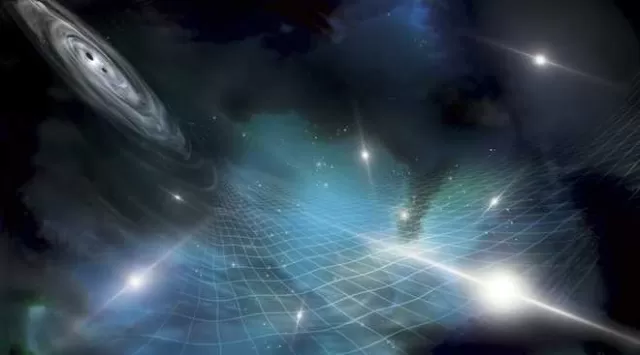First-Time Detection: Gravitational Waves from Massive Black Holes Finally Audible
Jun 30, 2023
Astronomers using galaxy-spanning networks of neutron stars have captured gravitational waves believed to come from merging supermassive black hole duos, marking a significant milestone after two decades of pursuit.

Astronomers using galaxy-spanning networks of neutron stars have captured gravitational waves believed to come from merging supermassive black hole duos, marking a significant milestone after two decades of pursuit.
Five distinct research groups from around the globe announced the discovery today. These gravitational waves are more extensive than those previously detected by ground-based instruments in 2015, which originated from smaller celestial bodies. This breakthrough paves the way for more insights into the origins and development of supermassive black holes (SMBHs) – cosmic giants weighing billions of suns at galactic centers. It could even shed light on new realms of physics.
The discovery has thrilled experts like Vicky Kalogera, an astrophysicist at Northwestern University, and Jason Hessels from the University of Amsterdam, neither of whom were part of the studies. The excitement stems from the successful utilization of millisecond pulsars, magnetized remnants of stars emitting radio waves due to high-speed rotations. These radio signals maintain a constant rhythm that's comparable to atomic clocks.
Disturbances in these signal patterns, caused by passing gravitational waves, provide the much-needed evidence of gravitational waves. However, the task is challenging due to numerous interference sources, including terrestrial radio signals, radio beam scattering, and even minor random variations in the pulsar rotations.
Despite these challenges, the North American Nanohertz Observatory for Gravitational Waves (NANOGrav) announced convincing evidence of the waves in their 15-year data set. Although this falls just short of the desired statistical confidence level for definitive discovery, it's still a remarkable feat, says Scott Ransom of the National Radio Astronomy Observatory, a member of the NANOGrav team.
The detected signal differs from those obtained by ground-based devices such as the Laser Interferometer Gravitational-wave Observatory (LIGO). Rather than capturing brief wave bursts from individual cosmic collisions, the pulsar timing methods register long-period waves from multiple sources overlapping in a background hum. These waves are created by pairs of SMBHs as they move closer to merging following galactic collisions.
The results could help answer questions about galaxy mergers and the formation of SMBHs. The strength of the detected signals suggests a high number of impending SMBH mergers, indicating larger or faster-merging black holes than previously predicted. This is in line with recent NASA data suggesting faster early universe galactic growth.
The five research groups are now aiming for a higher statistical confidence level in detection, possibly achievable with a combined analysis of their data within the next couple of years, believes theoretical astrophysicist Priyamvada Natarajan at Yale.
This discovery is a stepping-stone to more detailed studies, including mapping the background wave variation and identifying individual SMBH pairs. A combination of new and existing space-based observatories could cover a broader range of gravitational waves, unveiling the entire landscape of these cosmic ripples. According to Kai Schmitz, a NANOGrav team member at the University of Münster, the scientists are eager to delve further into their data to uncover more cosmic secrets.
